
Where We Be
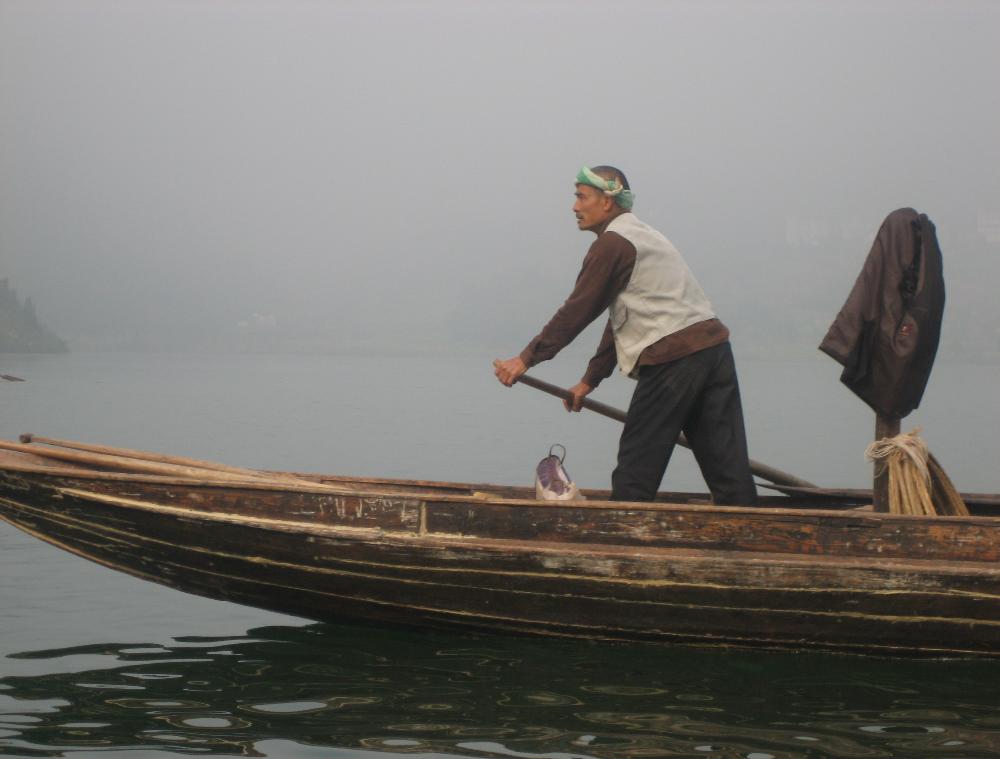
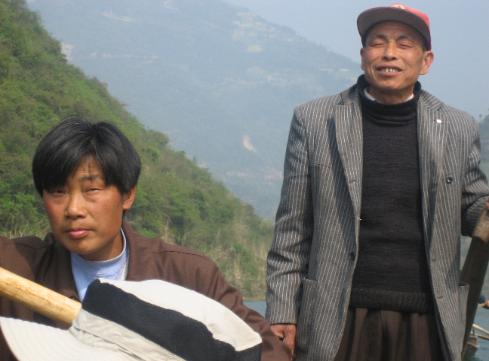



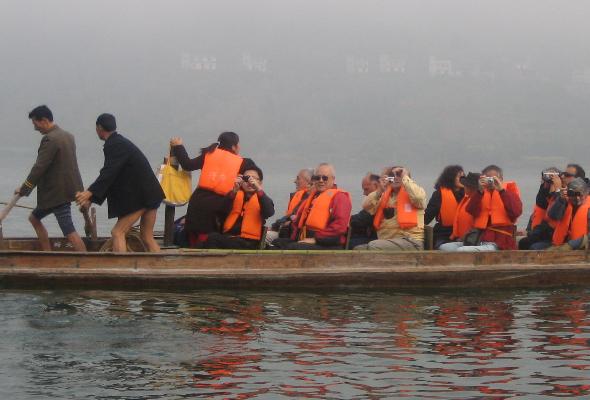
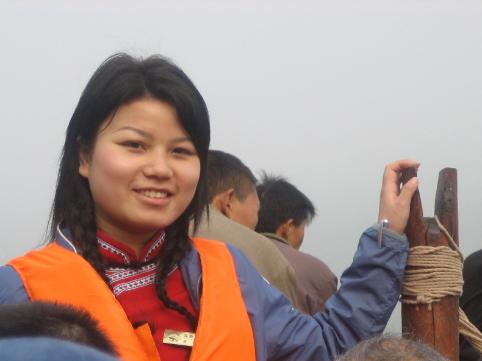
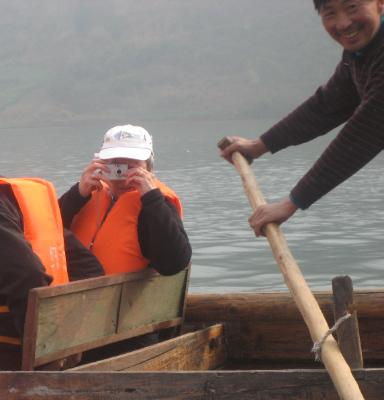
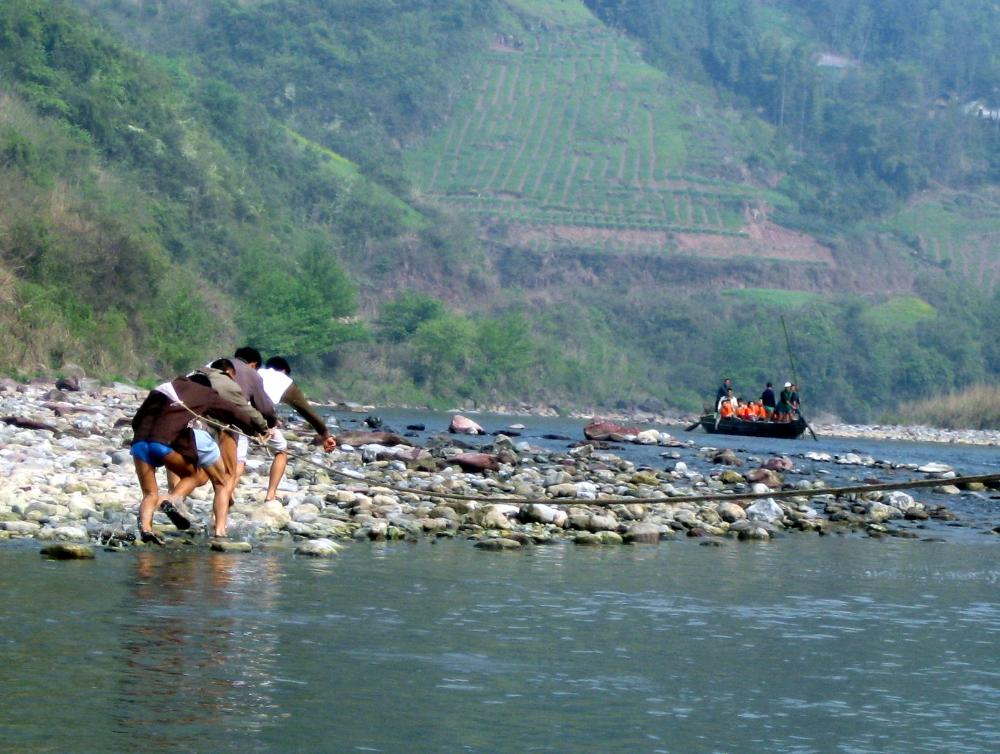
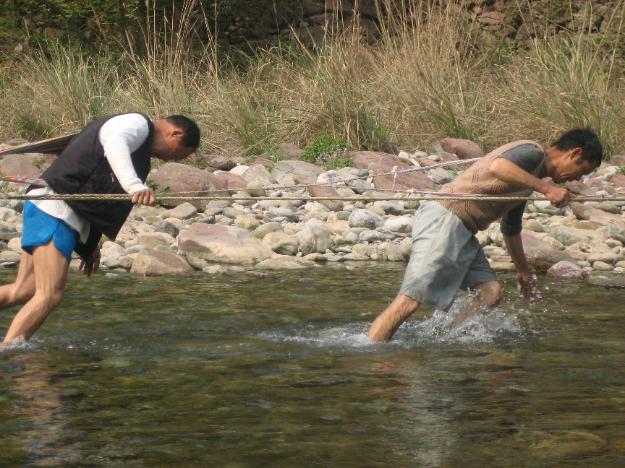
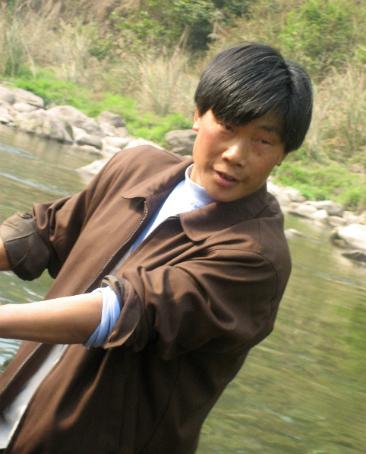
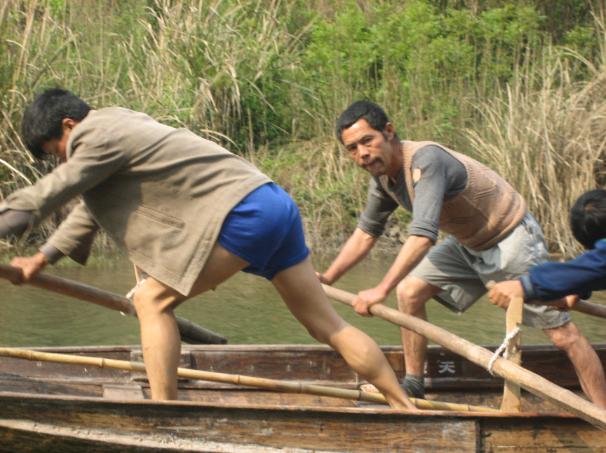
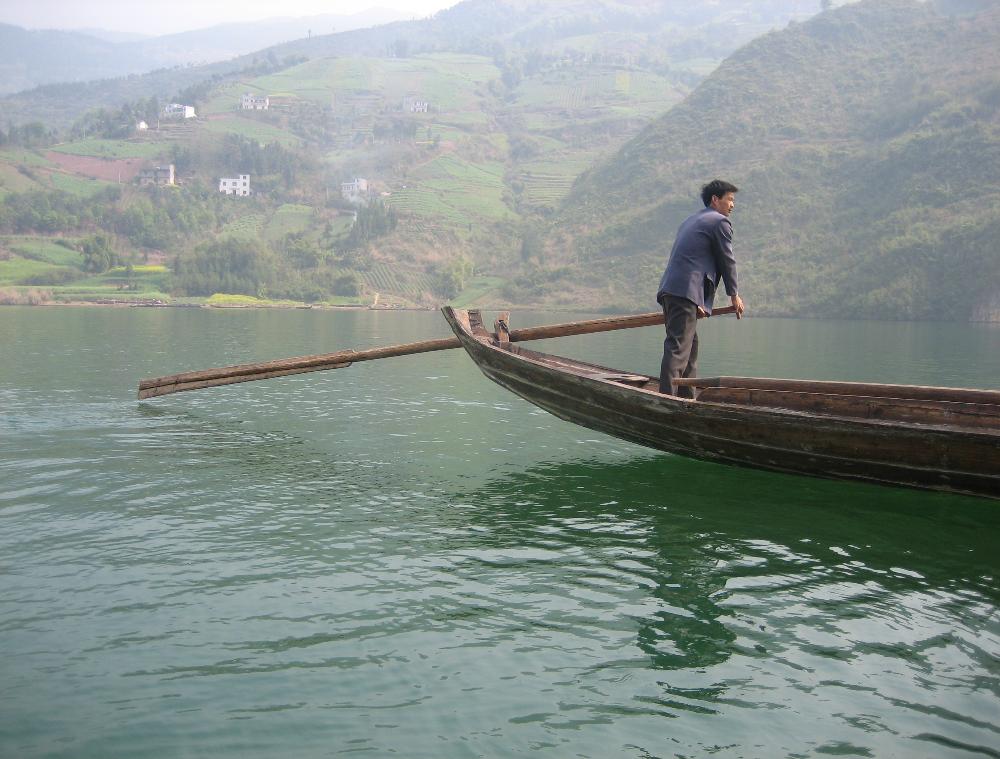
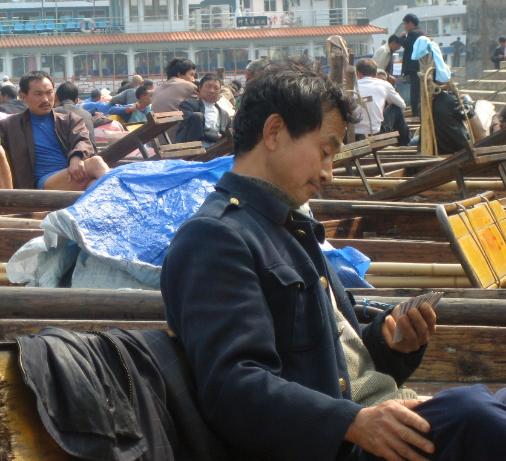
| Shennong Stream -- Yangtze, China |
One of the highlights of our trip is the morning
excursion up Shennong Stream. Boarding a
small ferry, we sail up this shallower tributary of
the Yangtze. The gorge quickly narrows,
offering striking scenery as the cliffs rise
higher and pull in closer on both sides. It’s
misty once again, but the mist only seems to
add to the romance of this stretch of river.
Clear green water, soft green bamboo, and
dark green mountains greet us at each turn.
The ferry drops us off a few miles upriver and
now the real fun begins. Our group is divided
in half and each half boards a long unmotorized
sampan. Four oarsmen in each sampan row us
upriver, against the current, through a shallow
section of Shennong Stream. Soon we enter an
even narrower stretch of water with a faster
current. The four oarsmen strike up a good
rhythm. The sound of the thin oars striking the
water in unison continues unabated for the
next thirty minutes. It’s peaceful -- no cars, no
motorized boats (the water is too shallow), no
noise except for the sound of the oars. Now
and then we pass a sampan going downstream,
full of happy Chinese passengers. They wave
and smile, calling out “Hello!” and snapping
pictures of us as we snap pictures of them.
Eventually the water gets so shallow you can
see the rounded stones on the bottom. The
current moves very swiftly here. At a word from
the captain, the four oarsmen clamber out. They
affix one end of a long rope to the sampan and
place loops at the other end crosswise over
their shoulders and torsos. Wading ashore,
they begin walking forward until the rope pulls
taut. By brute force they pull the sampan, filled
with 17 passengers, upstream against the
fiercely resisting current. They chant to keep
up a rhythm. The boat inches forward. They
bend nearly double with the effort of pulling us
upstream. It feels like we've gone back in time
to the days when trackers pulled boats up
swiftly flowing sections of the Yangtze River
itself in just such a fashion.
Eventually, we reach a point where the river
widens and the current is less swift. The
trackers clamber back into the boat, execute a
broad turn, and take us back downriver. The
current does the work for them now so they
can rest. As our sampan floats down the river,
our female guide sings a hauntingly sweet love
song of the minority people who live along this
stretch of the river.
excursion up Shennong Stream. Boarding a
small ferry, we sail up this shallower tributary of
the Yangtze. The gorge quickly narrows,
offering striking scenery as the cliffs rise
higher and pull in closer on both sides. It’s
misty once again, but the mist only seems to
add to the romance of this stretch of river.
Clear green water, soft green bamboo, and
dark green mountains greet us at each turn.
The ferry drops us off a few miles upriver and
now the real fun begins. Our group is divided
in half and each half boards a long unmotorized
sampan. Four oarsmen in each sampan row us
upriver, against the current, through a shallow
section of Shennong Stream. Soon we enter an
even narrower stretch of water with a faster
current. The four oarsmen strike up a good
rhythm. The sound of the thin oars striking the
water in unison continues unabated for the
next thirty minutes. It’s peaceful -- no cars, no
motorized boats (the water is too shallow), no
noise except for the sound of the oars. Now
and then we pass a sampan going downstream,
full of happy Chinese passengers. They wave
and smile, calling out “Hello!” and snapping
pictures of us as we snap pictures of them.
Eventually the water gets so shallow you can
see the rounded stones on the bottom. The
current moves very swiftly here. At a word from
the captain, the four oarsmen clamber out. They
affix one end of a long rope to the sampan and
place loops at the other end crosswise over
their shoulders and torsos. Wading ashore,
they begin walking forward until the rope pulls
taut. By brute force they pull the sampan, filled
with 17 passengers, upstream against the
fiercely resisting current. They chant to keep
up a rhythm. The boat inches forward. They
bend nearly double with the effort of pulling us
upstream. It feels like we've gone back in time
to the days when trackers pulled boats up
swiftly flowing sections of the Yangtze River
itself in just such a fashion.
Eventually, we reach a point where the river
widens and the current is less swift. The
trackers clamber back into the boat, execute a
broad turn, and take us back downriver. The
current does the work for them now so they
can rest. As our sampan floats down the river,
our female guide sings a hauntingly sweet love
song of the minority people who live along this
stretch of the river.
| Leave it to tourists to take pictures of each other! |
| These wooden sampans with their photogenic oarsmen make for terrific photos on a misty day |
| Once the rope pulls taut, these four men literally haul the boat forward against the strong current. It's something to watch! |
| When the trackers aren't hauling the sampans upstream with ropes, they're working just as hard rowing upstream |
| As our sampan floats back down the river, the captain sings a traditional rowing song. Then our female guide sings a hauntingly sweet love song of the minority people who live along this stretch of the river. |
| Unmotorized transport makes it easier to appreciate the quiet beauty of the river and the peacefulness of our surroundings |
| Our group "stalls out" at the long row of vendor stalls lining the way back to the ferry |
| The sampans are pushed right up against each other, forming an "island" where people can congregate and chat |
| At a picturesque little “sampan city” at the put-off point, men play cards on board their wooden vessels and rest amongst coils of rope in between journeys |
| Our friend, Shopper Bob, buys Mao’s Little Red Book only to discover later that it’s in French |
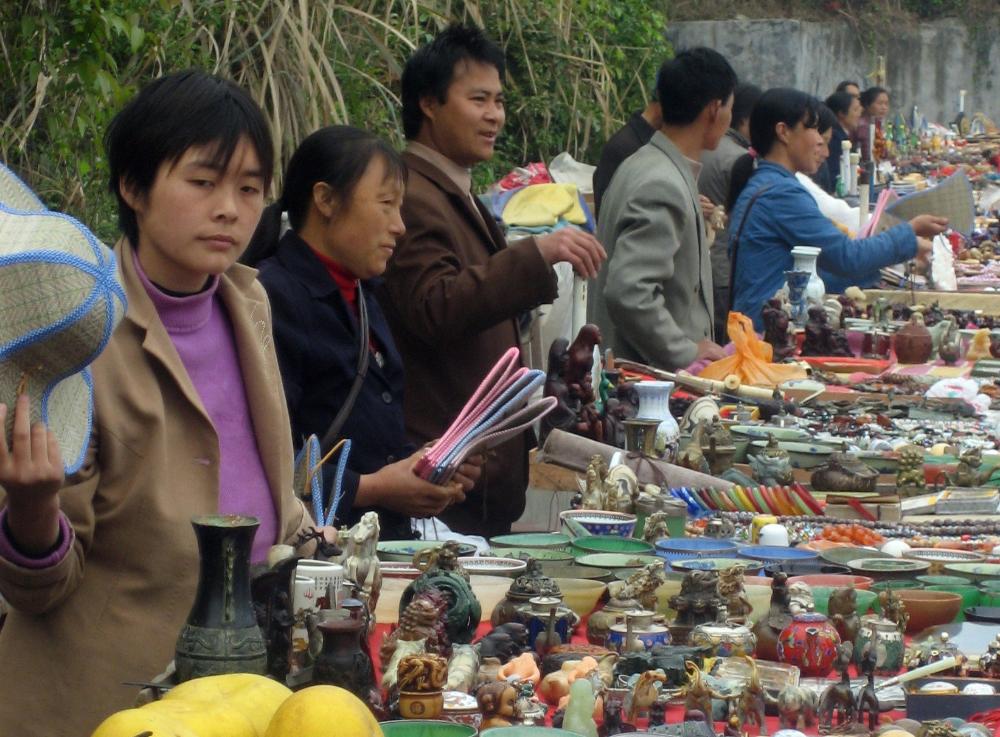

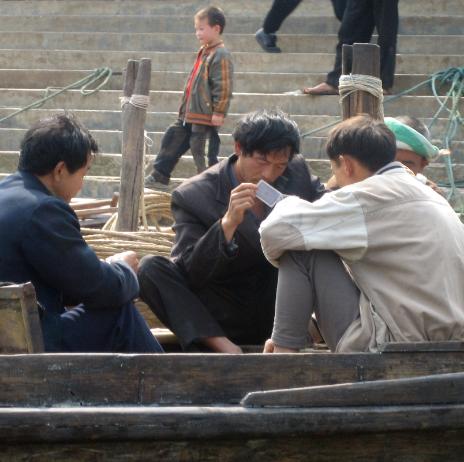
| The smile says it all -- this was a thoroughly enjoyable experience |
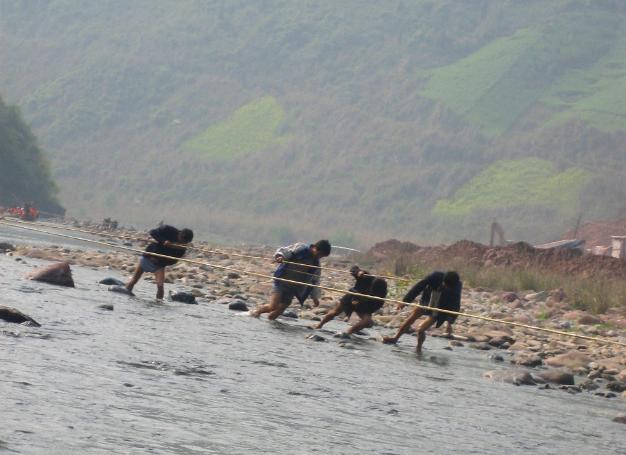
| By brute force men pull the sampans upstream, as they have traditionally done for centuries |
| Trackers once pulled boats up swiftly flowing sections of the Yangtze River. Now that experience is reproduced on Shennong Stream, a tributary of the Yangtze. |
| We donned bright orange life vests as we boarded the sampans |